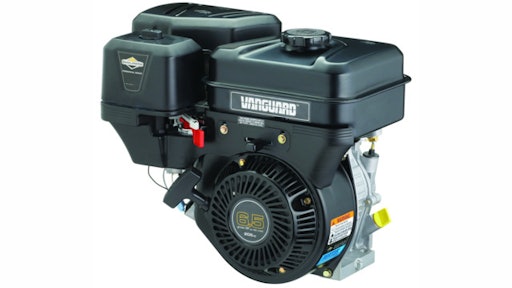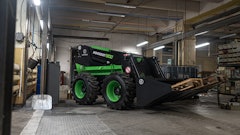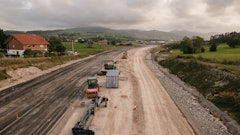
Due to the type of equipment they power - and also because, let's face it, they're at the mercy of your customers - small gasoline engines are prone to abuse and neglect. Often a well-running engine is what makes the difference between a successful rental and a dissatisfied customer, so what can you do to protect your engines and get the most life out of them?
Everyone knows proper engine maintenance and on- and off-season preparation are crucial, but it's easy to let the occasional shortcut become a habit. To avoid getting complacent about maintenanace, be sure to keep the following tips top of mind.
Getting started
Before you fire up a piece of equipment at the start of a season, make sure it’s ready. Start by inspecting the engine on a stable, flat surface in a well-ventilated area away from ignition sources. Check all components to make sure they're clean, in good condition and firmly in place, including spark plugs, the muffler and fuel cap. Also be sure wires and fuel hoses are intact and in good condition. Damaged fuel hoses can allow fuel to escape, which increases the risk of fire when near a hot engine.
Tighten or replace bolts that might have become loose or damaged due to vibrations or fluctuations in temperature. Renting equipment to customers with loose or broken fasteners could result in serious damage to the engine... and your customer.
Clean air is crucial to the engine’s efficiency. To make sure it’s getting enough, check the air filter and replace it if it’s dirty. Also replace a foam filter that has torn or shrunk so contaminants don’t get into the engine. Beware of substandard parts, however. "Not all replacement parts are created equal," says Dan Roche at Briggs & Stratton. "Use the OEM maintenance parts, paticularly with any filter."
Even more vital to engine efficiency is fuel. If it hasn’t been treated with stabilizer, it degrades and becomes stale. Stale fuel causes residue buildup that can plug the carburetor and prevent the engine from starting. "Use a fuel treatment," Roche advises. "They're not just for fuel storage. A fuel treatment can also prevent corrosion, gum and varnish."
To avoid this entirely, always replace old fuel.
Oil that hasn’t been changed regularly can become thick and gummy and increase the risk of corrosion that can keep the engine from running efficiently. Replace it with oil that has the proper weight. "Change your oil based on the owner's manual recommendations," says Roche. "Oil is the lifeblood of the engine and it removes contaminants."
Scott Mack at Kohler Co. advises using an oil specially formulated for air-cooled engines. "Most commercially available brands of oil are formulated for use in an automotive engine, which is liquid cooled," he explains. "In our industry, engines are air-cooled and it's important to use an oil for that type of engine. My advice is to use the OEM oil because you know it's blended for an air-cooled engine."
Cleanliness is another important, yet often overlooked, consideration. "Routinely clean the engine. Dirt and debris are abrasive," Roche says. "They can cause premature wear and can limit the engine's ability to cool itself."
If the engine has accumulated dirt and dust while in storage, a thorough cleaning will get rid of buildup and keep it running efficiently. Make sure the engine and recoil starter (if the engine is equipped with one) are free from dirt, grass or other debris. Also make sure the cooling fins under the shroud are clean and free of obstructions that could cause the head area to overheat. You can use an air hose to blow off the engine or wipe it down with a dry rag. Avoid washing it with a hose or pressure washer, which could force water into the engine and cause corrosion.
Avoid common problems
It’s not uncommon to occasionally experience problems with starting or lost power. When this happens, always begin by inspecting the four areas most crucial to engine performance: fuel, oil, spark and compression.
Make sure there is enough fuel in the tank and that the fuel valve (if the engine is equipped with one) is open and in the “on” position. Also ensure the engine has enough oil and the ignition is turned on. While these are obvious concerns, checking them first is a good habit.
In addition, make sure enough fuel is making its way to the engine. Choke and pull the starter five or six times, then remove the spark plug and see if the electrode is wet. A dry electrode indicates not enough fuel is being supplied to the engine, which can be a result of several issues and should be inspected more thoroughly.
An improperly gapped or loose spark plug could also be the culprit if an engine doesn’t start. Inspect it to make sure the porcelain and electrodes are not damaged and that it’s properly gapped so it can fire efficiently. Refer to your owner’s manual for the recommended gap distance. Tighten the spark plug firmly, but don’t make it too snug as this can damage the threads in the cylinder head.
You should also check to ensure the spark plug is producing a spark. To test it, take the cap off and remove the spark plug from the engine. Insert it back into the cap and place the metal base against the engine, which will ground the current as you test. Ensure the ignition is in the “on” position and slowly turn the engine over. If the plug does not produce a spark, then it should be replaced.
Also test the engine’s compression by slowly turning it over, but not starting it. If you can do this with little to no resistance, it’s an indication of a compression problem and the engine should be inspected more thoroughly.
"As an engine accumulates hours of use, components begin to wear and things such as valve clearance need to be checked and/or adjusted," says Robert Agner with Subaru Power Products. "If the valve clearance in an engine gets smaller or diminishes, it may reach a point where it will cause a valve to leak and not hold compression, especially when it gets hot," he says. "If allowed to run with a leaky valve, serious damage to the engine can occur, besides the fact that its power output will be reduced."
If your engine starts but operates with less power than normal, make sure the air filter is clean and unobstructed. If the fuel has a distinct odor, similar to varnish, it’s likely stale and could have caused residue buildup that plugged the carburetor. If so, you’ll need to replace the fuel and clean the carburetor.
"In order to get long life out of an engine it needs to be maintained with a good, functioning air filtration system and always have plenty of fresh, clean oil in the crankcase," Agner says. Part of maintaining an air cooled engine also includes a regular inspection of the cooling system, making sure there is no blockage of the cooling fins or restriction of the cooling air intake area. Checking valve clearances, checking and cleaning the spark arrester screen are also important.
"Consider too, if an engine is pulling a load that is more than it is rated for, it can lead to overheating. An engine that runs continuously at a full load can expect a much shorter life span than an engine that runs a ¾ or ½ load," he says.
Any time issues arise, it’s a good idea to go to the manufacturer’s website; many of them offer how-to videos on troubleshooting common issues. But what’s even more critical than troubleshooting is heading off unexpected problems with regular maintenance.
Before you store
Most equipment is not operated year round, so it’s vital to prepare the engine for long-term storage. These simple steps will ensure it doesn’t become damaged by rust or corrosion and make it easier to get the machine up and running next season.
As mentioned before, stale fuel has the potential to plug the carburetor. To eliminate the risk of issues next season, clear the lines by draining the fuel tank and running the engine dry.
Another option is to add fuel stabilizer, which keeps the fuel from going stale and prevents corrosion and rust within the tank. First, fill the tank with fresh fuel, which leaves no room for condensation that can lead to rust and fuel contamination. Next, add the fuel stabilizer. Refer to the instructions on the bottle for the recommended amount. Start the engine and allow it to run briefly until the stabilizer is cycled through the system. Keep in mind that stabilizer is only good for about one year. If you will be storing the engine for longer than that, you should drain the fuel.
It’s also a good idea to lubricate the system to inhibit rust formation. Remove the spark plug and spray fogging oil or use a dropper to place one tablespoon of oil in the spark plug hole. Distribute the oil throughout the combustion chamber by pulling the recoil rope until you’ve reached top dead center, which means the piston is at its highest point. This ensures the intake and the exhaust valves are closed, and the potential for air, water or pests to enter is eliminated. Clean or change the air filter if necessary; doing it now means a quicker startup next season.
Also replace the engine’s oil. In addition to acid buildup that can corrode the engine’s internal components like the crankshaft and connecting rods, water and particles collect in the oil during normal use. Leaving those contaminants in the oil during storage also leads to corrosion.
Cover your equipment with plastic to keep dust and debris out. Store it on a level surface in a well-ventilated area away from furnaces, stoves, water heaters, motors or anything else that has an ignition source or could produce a spark. Moisture promotes rust and corrosion, so keep the equipment in a dry area with low humidity.
With the right preparation, your equipment will withstand the effects of long-term storage. Whether it’s a generator, power washer or some other piece of power equipment, following these guidelines and your owner’s manual for engine maintenance and troubleshooting will keep it in top shape so it’s ready when your customer needs it.


























